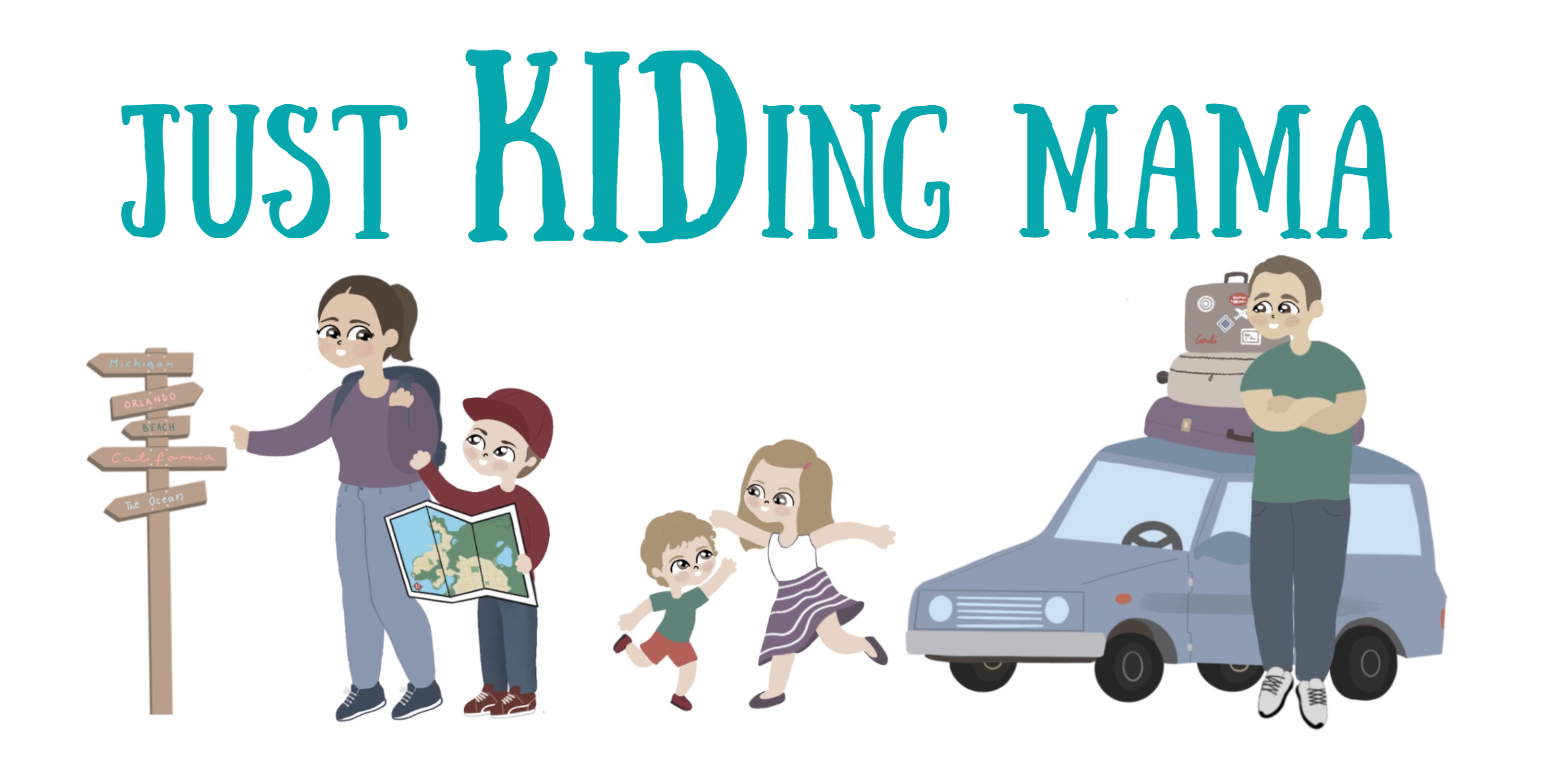Port of Ludington Maritime Museum, Ludington, Michigan, USA
So your travel brings you to Ludington.
Maybe it was an intended beach day, and you are looking for a mid-day diversion from the hot sun. Possibly the ever-changing weather of Michigan has postponed your beach plans, or maybe in the dead of winter, you are looking for a cozy indoor activity that will delight the entire family.
Enter the Port of Ludington Maritime Museum.
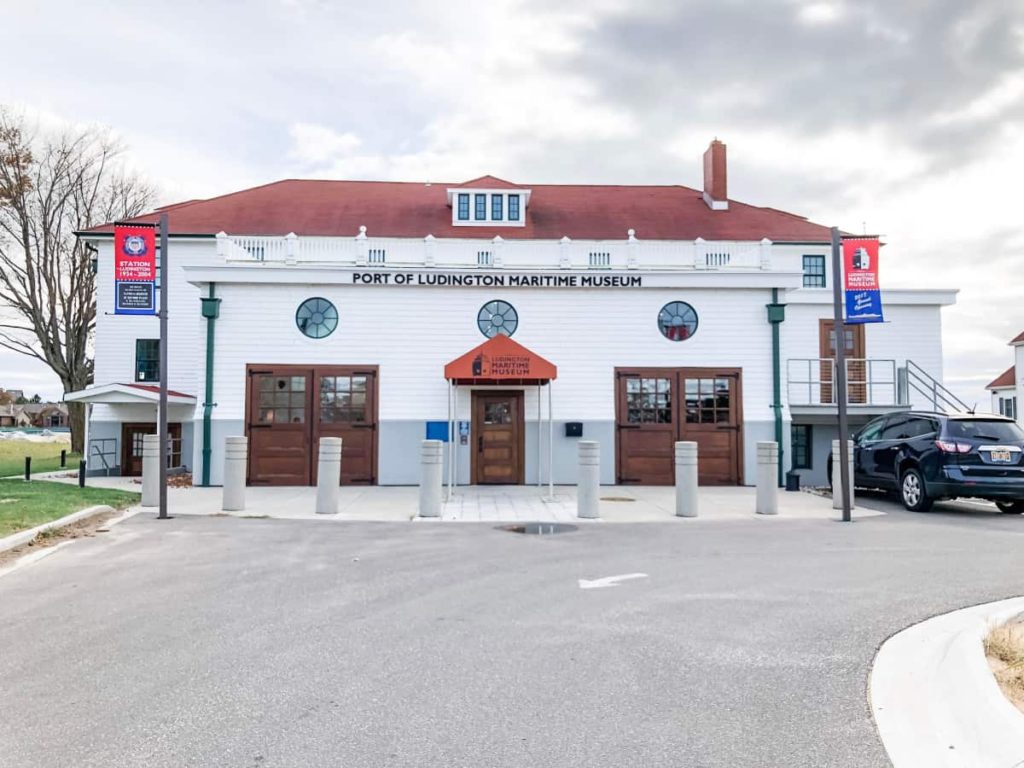
Museum tickets were provided by Port of Ludington Maritime Museum for us to explore. As always I do my best to represent the opinions of each person in our crew that attended.
You have probably walked right past it a time or two on your beachside strolls around town. Next time, take a few minutes to explore what is inside, you will not be disappointed.
With Michigan being bordered by four great lakes, as Michiganders, we tend to be drawn to the shores. At the Port of Ludington Maritime Museum, you will learn about the regions maritime history in a way that might spark some conversations about your next vacation mode of transportation.
Upon entering you can’t help but be drawn into a one-way conversation with a digital holographic captain as he greets you with a little backstory about the museum itself. The building used to be the location of the U.S. Coast Guard Station, now located next door in a more modern building.

Before we could even visit with the front desk volunteer long enough to check-in, Buggie was already up to the top of the scale model of Ludington’s North Pier Light, proudly calling to me from the top. The stairs inside are bunk bed style, and probably not the best idea for littles, like Bubba. Yet, staying true to his independent and adventurous spirit, he climbed up to the first platform before having a baby panic. Adults are welcome to climb up as well, but I will caution you that in my haste to get to little B, I didn’t realize how low the ceiling was on the floor level. Heed my advice and watch your head.
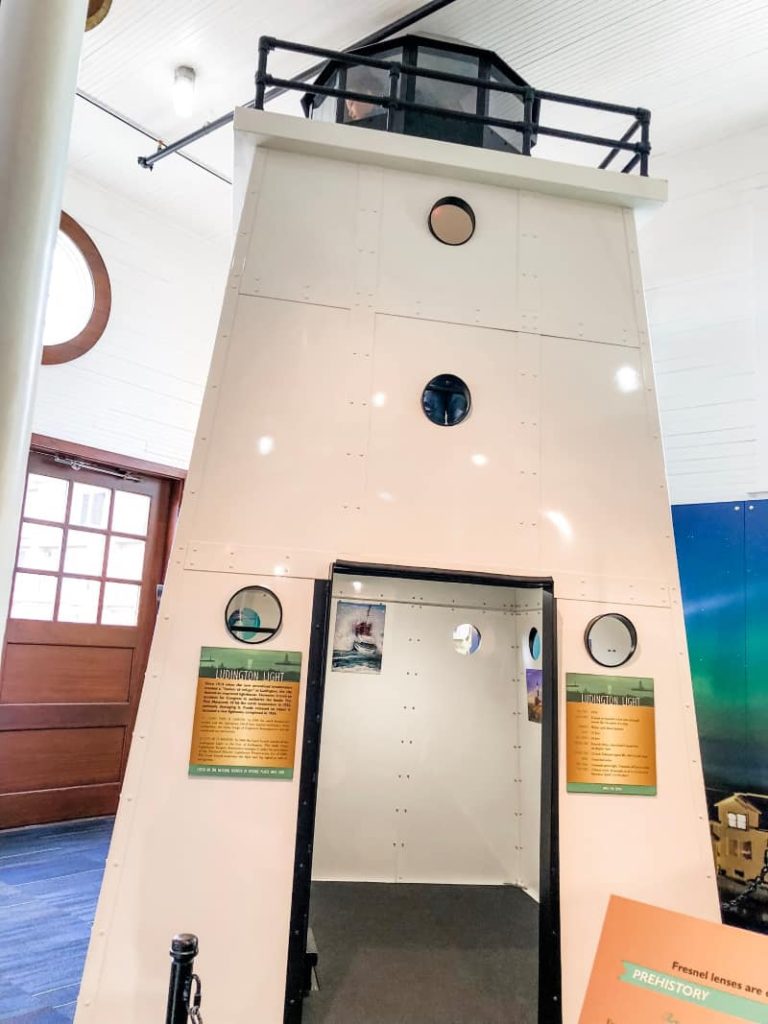
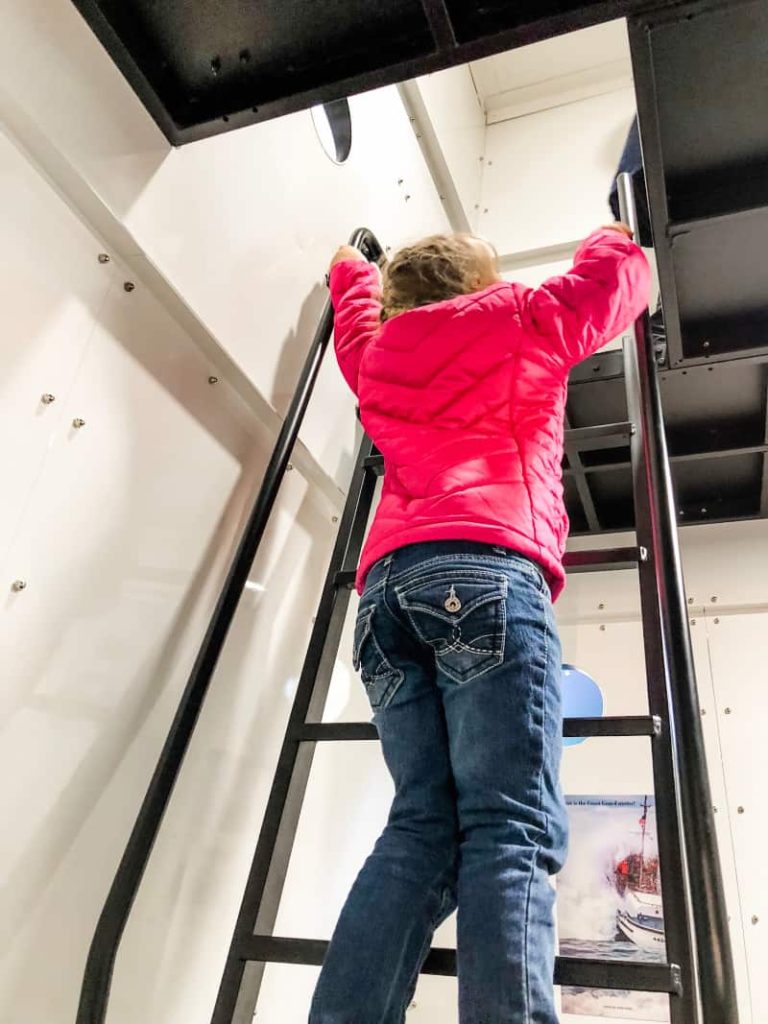
At first glance of the museum, I started to get the Mama sweats, because the room is filled with history and precious artifacts everywhere I looked. But quickly my fears subsided when I saw this cute interactive logos clearly defined with a hand with an extended index finger – touching is encouraged!
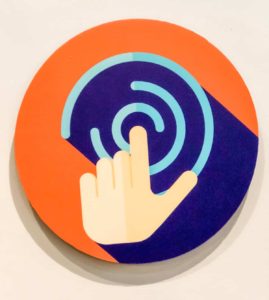
As our tour of the bottom floor went on, we continue to be treated to more digital storytellers, as well as many different types of interactive stations, including a true to size ship wheel, which was much harder to spin than the kids imagined, and a small movie theater that rotates documentary films. We took in a showing of the history of the S.S. Badger, which was a rail car freighter before it was turned into the carferry it is today.
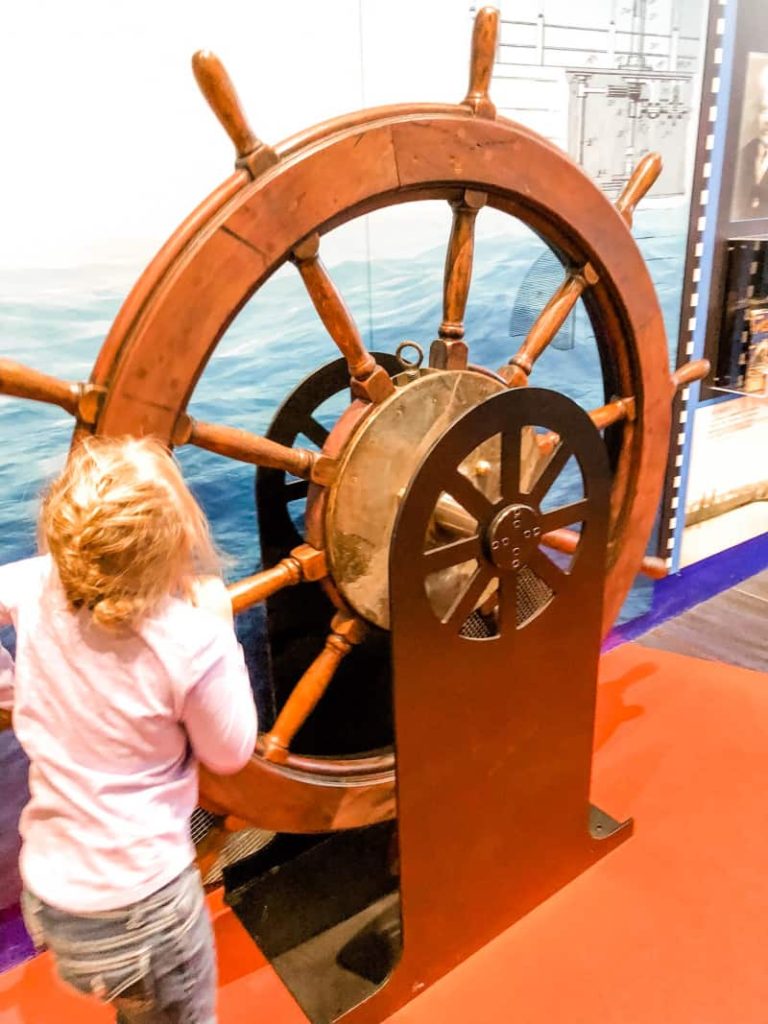

The second floor is a surprising delight! The Pilot House features a full 180-degree digital display that mimics the windows of a ship. Realistic controls allowed you to steer the ship the way a real captain would. This gave Buddy the challenge he craves, as it continued to give him different docking locations and weather conditions, sort of like a giant educational video game. I was delighted when I made my rounds to check on him, and he was working cooperatively with an older gentleman to safely dock their ship. It was unclear which of them were having more fun.
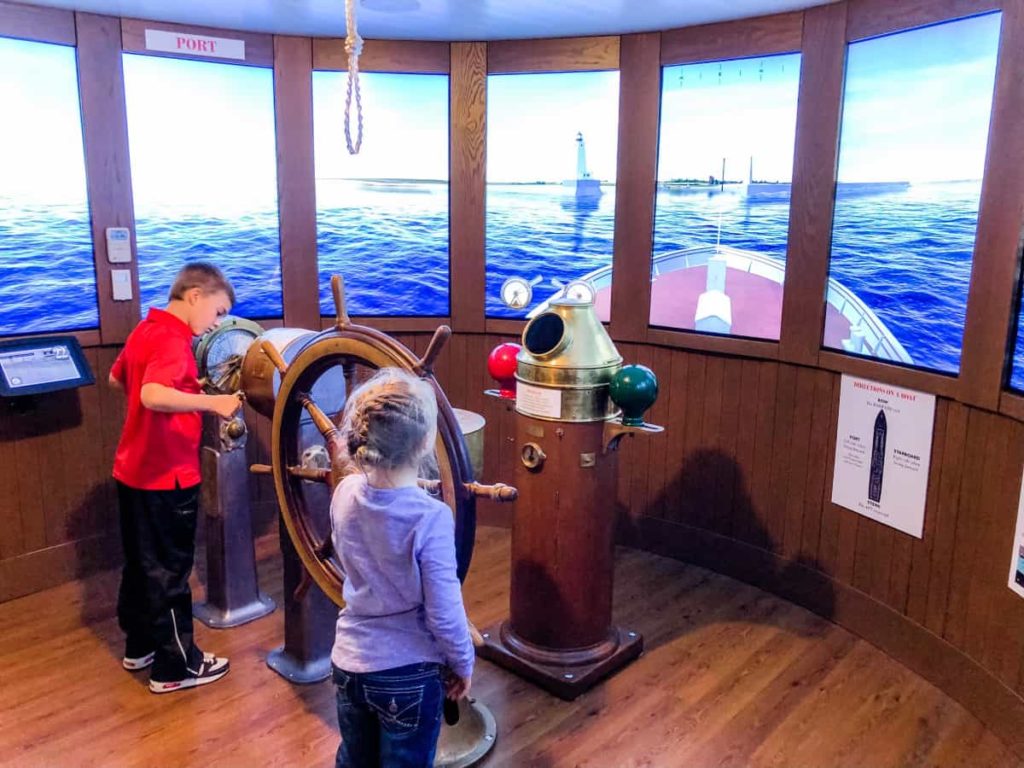
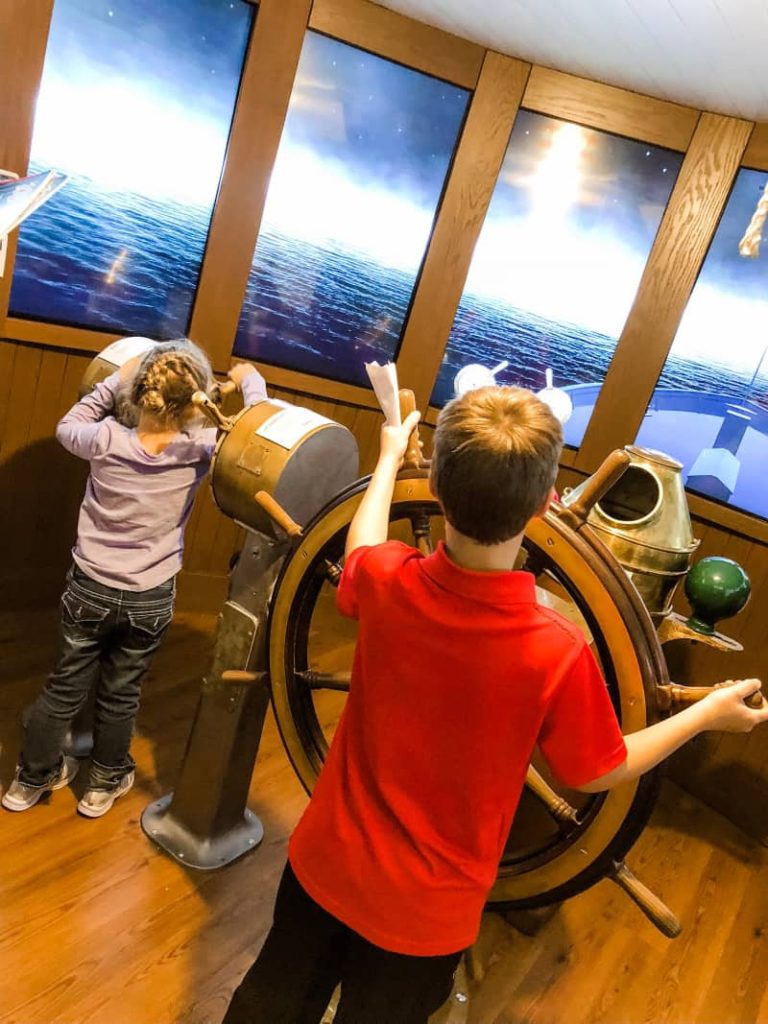
The third level held some impressive exhibits of shipwrecks of the Great Lakes, as well as a touch screen map that would show the real-time location of ships all over the world. This would have been useful if there had been any ships sailing into the channel that we were on that day, but it didn’t look as if any were scheduled.

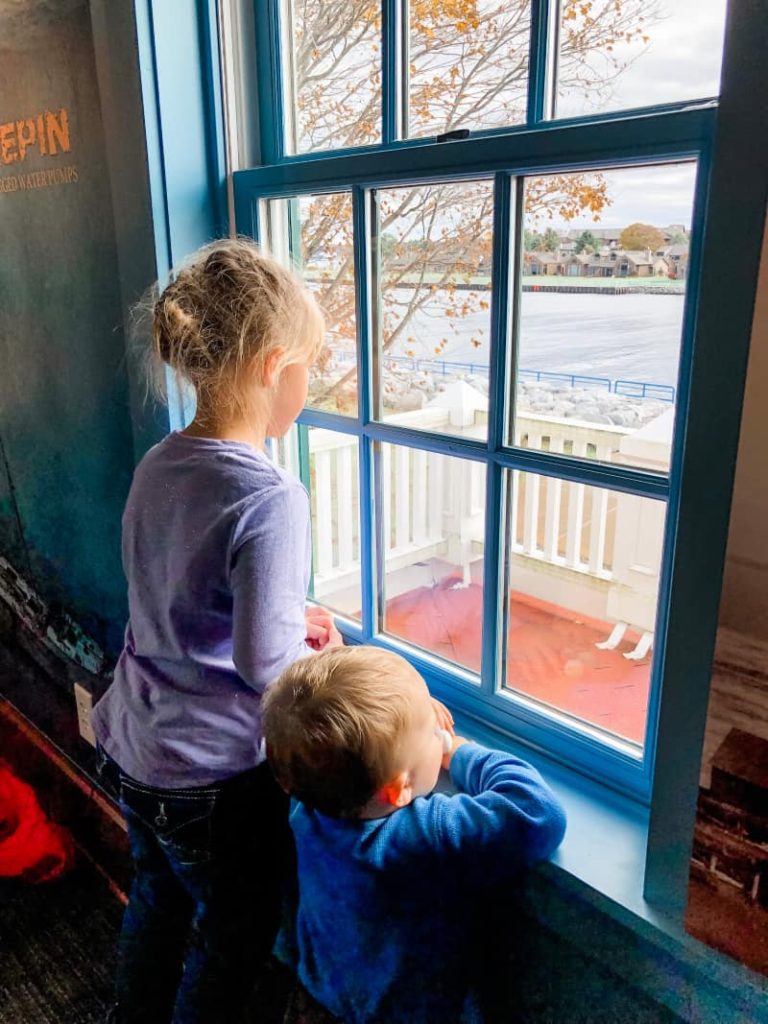
As we peered out out the windows from the third story, after we got over what a gloomy, snowless Michigan winter day it was, we saw the North Pier Light, as well as the S.S. Badger carferry that we learned about down on the first floor.
On this particular day, Bubba had refused a nap (hence the pacifier stuck in his mouth) and was not amused by artifacts as long as the older two were. As I was hanging out towards the front of the museum waiting on the others to finish their countless attempts at docking the ship up in the Pilot House, I stumbled across one last interactive exhibit, that I wish I had found the moment we walked in.
It was an interactive model of the work that it took to load the ships by handcart, and then the process of unloading them. (Great articles explain the entire process in detail) However, for Bubba, it was the thrill of loading the wooden blocks one at a time into the hole, and then once it was full, pulling the lever and gleefully watching all of the blocks fall to the ground so that he could start all over again. I honestly think he could have spent hours just loading and unloading.
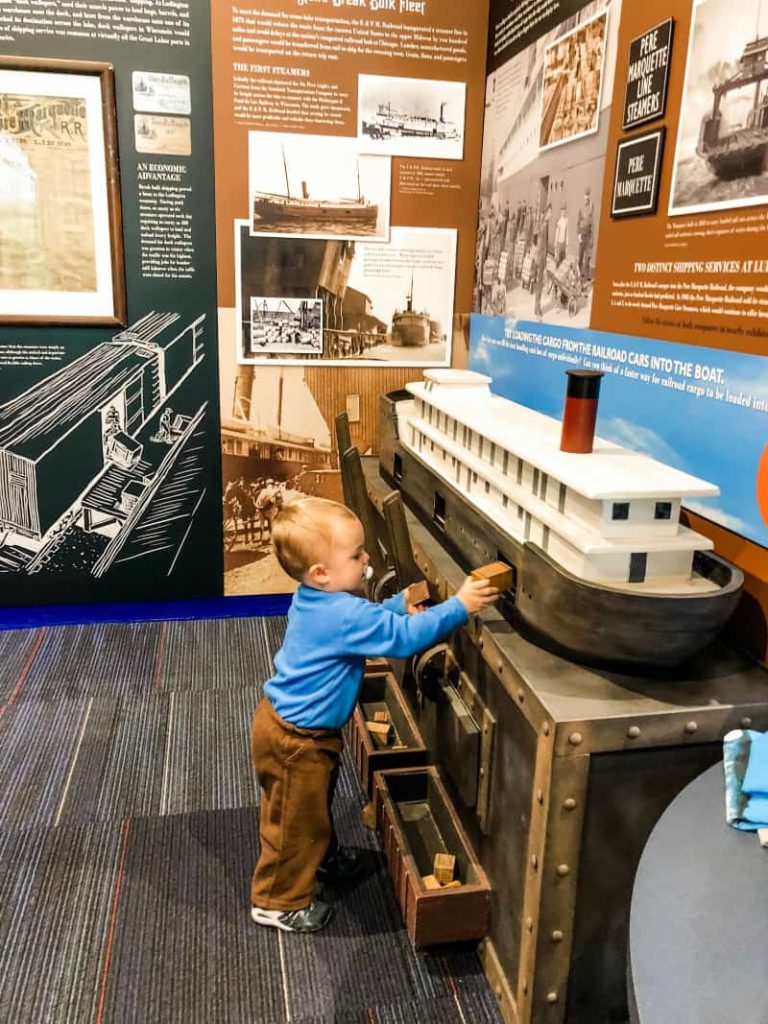
From a design aspect, the building restoration of this 1934 US Coast Guard Station and transformation into a historical museum was well done. Every attention to detail was taken in the design of this building. The nautical theme was even carried into the restrooms and carpets alike. The staff was knowledgeable and small-town friendly. We did, however, manage to stump them with a question. The front of the building has three distinct sets of doors. The middle door is the museum entrance and is a standard door size. The other two flanking doors are only slightly taller and double wide, almost barn style doors. However, they were shorter than the back door, which made us wonder what they used the front doors for. Maybe we will learn the answer to this next time because Buddy is already planning his next visit to the Ludington Maritime Museum.
On a summer day, I could see us visiting the museum and packing a picnic to eat on the backside of the museum where they would have traditionally rolled the rescue boats into the water.
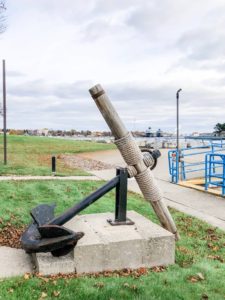
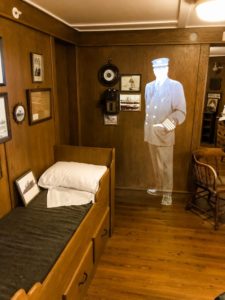
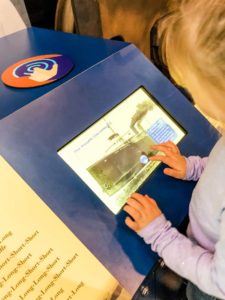
This was a hit with everyone! Buddy says his favorite part was the third story where he could see the missiles, as well as the interactive worldwide aquatic vessel locator. Daddy and Buggie enjoyed the Pilot House because she got to steer her own “real boat.” Bubba enjoyed the wooden block shipyard, and Mama enjoyed the fact that everyone was free to explore at their own level of learning and understanding.
Check them out yourself! www.ludingtonmaritimemuseum.org/
